6 Serial Communication
USB Bridge, UART, I2C and SPI Peripherals.
6.1 USB Bridge
The MCP2221A is a USB-to-UART/I2C serial converter. It bridges the gap between a computer's USB port and the I2C and UART interfaces on the Explorer. When the on-board USB-C® is disconnected, the USB bridge is held in reset.
You can keep the USB bridge in reset using the MCU on the CNANO by pulling IO-37 on the Explorer low. Tip: When not in use, it is
recommended to disconnect the bridge reset from the CNANO socket by removing the
jumper cap on IO-37. | 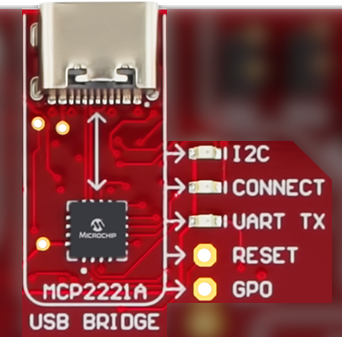 |
The UART connection to the CNANO socket is shared between the USB bridge and the mikroBUS™ socket. Use slide switch S501 to select the connected UART.
6.2 UART Peripherals
The CNANO’s default UART pins are shared between the USB bridge and the mikroBUS™ socket. Only one of the connections is active at any time. Select which pins are connected to the CNANO socket using slide switch S501. | 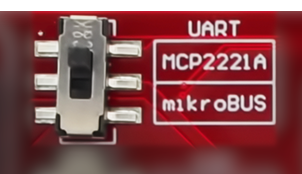 |
6.3 I2C Peripherals
6.3.1 I2C Bus
The Explorer features an I2C bus with several attached devices and external connectivity options. All connected devices are compatible with Standard Mode (100 kHz) and Fast Mode (400 kHz) I2C. The bus is designed to meet the rise-time requirements for both modes. The SDA and SCL signals are connected to the COM section of the CNANO socket.
The Explorer’s I2C bus can be split into two separate buses using the slide switch S500. Each bus has its own set of pull-ups - I2C pull-ups A and B. When the I2C bus is split, the USB bridge and the power monitor ICs are isolated from the main I2C bus, with the USB bridge acting as the host to communicate with the power monitor IC. | 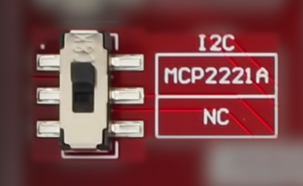 |
| Parameter | Value |
|---|---|
| I2C Pull-up A | 2.7 kΩ |
| I2C Pull-up B | 5.1 kΩ |
| I2C bus with Pull-ups A and B | |
| I2C bus capacitance1 | 130 pF |
| Rise-time2 | ~200 ns |
| I2C bus with Pull-up A isolated | |
| I2C bus capacitance1 | 95 pF |
| Rise-time2 | ~220 ns |
| I2C bus with Pull-up B isolated | |
| I2C bus capacitance1 | 35 pF |
| Rise-time2 | ~150 ns |
Note: 1Bus capacitance calculated using measured rise time with equation 1 from the I2C-bus specification and user manual. 2Rise time is defined as the time it takes for the I2C bus to rise from 0.3*VDD to 0.7*VDD. | |
6.3.2 Temperature Sensor
MCP9808 is a digital temperature sensor connected to the Explorer’s I2C bus. The alert pin is connected to the CNANO socket IO-24.
| 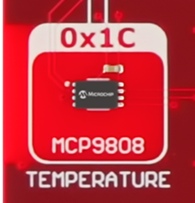 |
6.3.3 Secure Element
ATECC608B is a secure element in the Microchip CryptoAuthentication™ family and is connected to the Explorer’s I2C bus.
|  |
6.3.4 Proximity and Ambient Light Sensor
VCNL4200 is a proximity sensor (PS) and ambient light sensor (ALS) connected to the Explorer’s I2C bus.
| 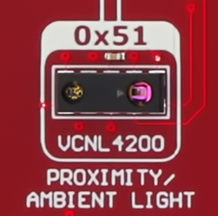 |
6.3.5 2 Mb Serial EEPROM
AT24CM02 is a 2 Mb Serial EEPROM connected to the Explorer’s I2C bus.
| 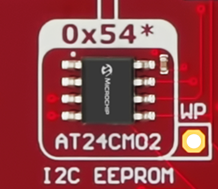 |
6.3.6 I/O Expanders
The Explorer features two MCP23008 I/O expanders connected to the I2C bus.
- 8-bit bidirectional I/O port
- I/O pins default to input
- Configurable interrupt output pin
- See chapter LED Row and I/O Expander 1 for more information.
- See chapter Buttons, Joystick and I/O Expander 2 for more information.
6.3.7 OLED Display Module
|
The Explorer features an OLED
display connected to the I2C bus.
Info: 7-bit I2C address:
0x3D. Alternative I2C address 0x3C can be used by
connecting pin A0 to GND. | 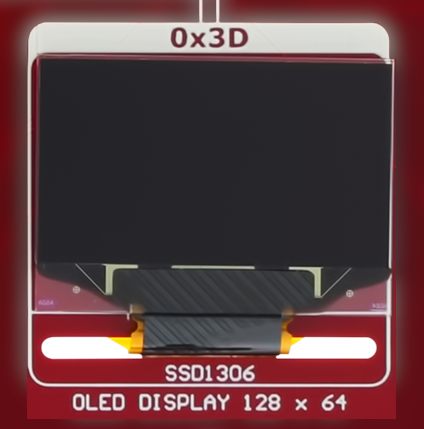 |
6.4 SPI Peripherals
6.4.1 SPI Bus
6.4.2 Digital-to-Analog Converter
MCP4821 is a single-channel 12-bit Digital-to-Analog converter (DAC) with internal voltage reference. The DAC is connected to the SPI bus on the Explorer.
| 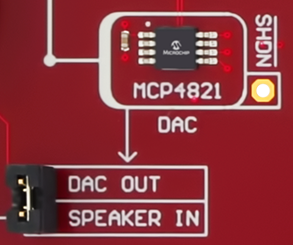 |
| Gain Selection | Ideal Output Range | LSb Size |
|---|---|---|
| 2.048V | 0.0-2.0475V | 0.5 mV |
| 4.096V | 0.0-3.299V | 1.0 mV |
6.4.3 4 Mb Serial EEPROM
25CSM04 is a 4 Mb Serial EEPROM connected to the Explorer’s SPI bus.
| 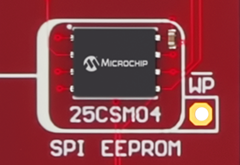 |
6.4.4 microSD Card Socket
The Explorer features a microSD card socket connected to its SPI bus. Only pins required for an SPI connection to a microSD card are connected to the CNANO socket. All pins of the microSD card socket are available on pin headers close to the microSD card socket. The pin headers allow devices with a dedicated high-speed multimedia interface to fully utilize all data lines of a connected microSD card. | 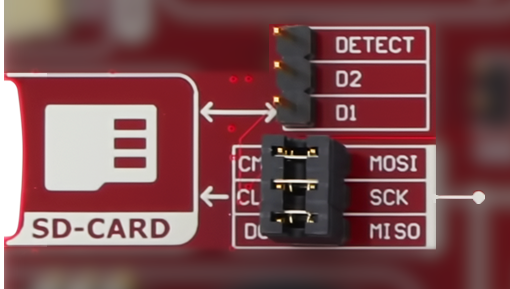 |
